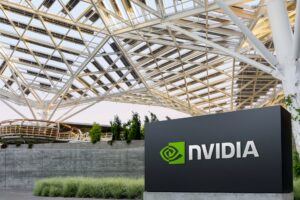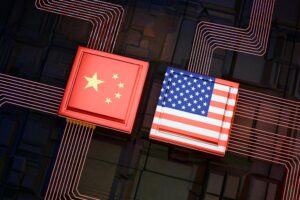
(Bloomberg Opinion) — Another decade is in the books. As the 2010s draw to a close, it is once again time to visit my friends at Hindsight Capital LLC, a very special hedge fund.
For the uninitiated, Hindsight Capital, a figment of my imagination, is the most successful hedge fund of all time, and uses the one strategy guaranteed to beat all others, all of the time: hindsight. It places its trades in full knowledge of how they will end up.
The ability to predict the future could deliver infinite profits, so I put some limits on them. No trading is allowed, and no leverage, and no single stocks. Hindsight’s managers also must show that there was a rationale for the trade at the time that they made it — they cannot, for example, use their ability to foresee market-moving natural disasters such as the Japanese earthquake and tsunami of 2011. They can, however, bet on stocks to fall by selling short.
The 2010s took most of us by surprise. U.S. stocks rallied all decade long, emergency-era monetary policy persisted throughout the decade, and yet neither inflation nor a convincing economic recovery ever occurred. The fate of incumbent politicians over the last few years shows just how most of us feel about the post-crisis world.
But boy, was there money to be made just by sitting in U.S. equities; and there was vastly more money to be had for the managers at Hindsight Capital. All they needed, as the decade dawned, was to grasp a few simple truths: The shock to the global economy was so severe that inflation wouldn’t come back; the Federal Reserve wouldn’t allow asset prices to fall and had the power to make sure it didn’t happen; the euro zone and its banking system were fatally flawed and bound to suffer; China’s economy was in transition and would no longer underpin mad rises in commodity prices; and disbelief and disillusion with monetary policies that seemed manifestly unfair to the poor would spark the younger generation into a desperate search for something better.
Here then were the trades Hindsight Capital put on as 2009 gave way to 2010, and their returns as of Dec. 20:
A Wager on the Immaterial World
A weak global economy ensured problems for raw materials, particularly energy. The surfeit of production inspired by the panic before the financial crisis about “peak oil” and the search for alternatives would damage energy prices further. Meanwhile, the growth and power of the internet economy had much further to go. Hindsight couldn’t invest in Facebook Inc. or the social media companies, because they weren’t yet public in 2009, but the S&P 500 Software Index returned some 470%, led by the renaissance of Microsoft Corp. Meanwhile, the Bloomberg Commodity Energy index dropped 71%. So $100 in a long software/short energy trade would have turned into $1,971 by decade’s end, with dividends reinvested, and $1,783 on a price-only basis.
A Flier on the Fed, and the Dollar
It was obvious to Hindsight Capital that the Fed wouldn’t let asset prices fall, and would leap in whenever necessary. So in a very simple trade, it bought the S&P 500 Index. Meanwhile, the weakness of oil offered a simple way to juice the profits. Hindsight moved to Oslo, the capital of Norway, and home to the decade’s weakest currency among developed markets (I turned down Hindsight’s pleas to move to Buenos Aires and denominate in Argentine pesos as just being greedy). Falling oil prices meant a weak krone and a stronger dollar, and thereby made for fantastic performance by the S&P 500 when denominated in krone. It turned NOK 100 into NOK 550 over the course of a decade, the 450% growth eclipsing by far the 250% that the S&P returned in dollars.
A Bet Banks Will Recover in the U.S., But Not the Euro Zone
By the end of 2009, the U.S. authorities had done enough to save their banks. The euro zone had not; it was burdened by banks far more bloated than their American counterparts, and by the hopeless straitjacket of the euro, which required that very different economies should all have the same monetary policy. The European Central Bank had been created to defend the euro, Europe’s politicians were desperate for it to do so, and so there was no doubt that the euro would survive. But the measures to do that would mean dreadful suffering for the banking sector. And so Hindsight Capital bought the KBW index of large U.S. banks (which rose 164%), financing it with a short position in the FTSE-Eurofirst euro zone banks index (down 61.5%). That would have turned $100 into $695 over the course of a decade ($550 when dividends are taken into account).
A Gamble That Crypto Is the Future …
As the decade began, a generation had lost all faith in markets, the dollar, and anything to do with banks, or governments, or almost anyone in power. Economic collapse beckoned. Traditionally, gold might have been the answer to the prayers of this distrustful generation. But technology expanded horizons. So Hindsight Capital bought Bitcoins. If it had put $100 into Bitcoin at the beginning of the decade and held it (or hodled it as Bitcoin aficionados would say) it would now be worth some $9 million. Had Hindsight been allowed to sell at the top, it would have made $23.3 million. Hindsight also offered conservative clients an opportunity to increase their gold holdings for the future. One hundred grams of gold put into the cryptocurrency a decade ago would have yielded enough Bitcoin today to buy 7.2 million grams of the precious metal. Or, in imperial weights, the alchemy of Bitcoin turned a quarter of a pound of gold into almost 8 tons. In the unlikely event that someone out there actually put this trade on a decade ago, I would recommend taking profits. Blockchain may well prove to be transformative technology, but such gains aren’t sustainable.
(In the chart, the purple line along the bottom shouldn’t be confused for the X-axis; it is the S&P 500 Index. In comparison to Bitcoin, this decade’s great bull market looks like a flat line).
… And So Is Passive Investing
To be clear, nobody should expect anyone to make the kinds of gains that are open to someone operating with the benefit of hindsight. In the real world, you have to guard against the possibility that you are wrong. But Hindsight’s returns show what was possible. Meanwhile, a wholly sensible plan for an American in 2009 would have been to put 60% of their money into an S&P 500 exchange-traded fund (SPY), which returned 250%, and 40% into a long-dated Treasury bond fund (TLT), which returned 103%. The oldest and most boring trade in the book would have turned $100 into $298.
As for real hedge funds, they didn’t put on trades anything like Hindsight’s, largely because of repetitive and unsuccessful bets that rates were at last going to rise. Most of them could only dream of the returns made by passive ETFs. Equity hedge funds, investing only in equities, and Macro hedge funds, able to switch between asset classes, were trounced not only by SPY, but even by TLT:
With hindsight, it would have been best to avoid hedge funds. Hindsight Capital, of course, foresaw the growth of passive investing, and worked out that by far the best way to invest was through the companies that draw up the indexes. Three quoted companies dominate the indexing industry: the London Stock Exchange (owner of FTSE and Russell), S&P Global (owners of S&P and Dow Jones indexes) and MSCI. (Bloomberg LP is also a major player in indexing, but isn’t publicly quoted). Hindsight commissioned an equal-weighted index of these three companies, and it turned $100 into $999.54 (or $1,000 if we are rounding up).
For the future, as passive funds grow, the entire fund management industry has many questions to answer. It is often pointed out, quite correctly, that markets couldn’t function if all funds were passive. But if the active management industry keeps performing like this, the future doesn’t look bright.
Finally, for those of us who didn’t match the stellar returns of Hindsight Capital in this decade, the issue now moves on to the ‘20s. Unfortunately, Hindsight Capital wouldn’t tell me the trades they are putting on for the next decade.
To contact the author of this story: John Authers at [email protected]
To contact the editor responsible for this story: Beth Williams at [email protected]
This column does not necessarily reflect the opinion of the editorial board or Bloomberg LP and its owners.
John Authers is a senior editor for markets. Before Bloomberg, he spent 29 years with the Financial Times, where he was head of the Lex Column and chief markets commentator. He is the author of “The Fearful Rise of Markets” and other books.
<p class="canvas-atom canvas-text Mb(1.0em) Mb(0)–sm Mt(0.8em)–sm" type="text" content="For more articles like this, please visit us at bloomberg.com/opinion” data-reactid=”40″>For more articles like this, please visit us at bloomberg.com/opinion
©2019 Bloomberg L.P.






